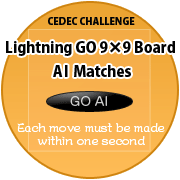Efficient Delivery of Mobile Augmented Reality Gaming; Combining High Performance Video and Graphics
- Date
- September 2 (Thu) 17:50 - 18:50
- Format
- Session (60min.)
Expected Skill | Persons with experience in GPU programming |
|---|---|
Ideas Take Away | Attendees will receive: an understanding of the challenges of real-time AR on mobile platforms; an overview of how AR applications can be written; what the benefits of utilising techniques such as texture streaming and other optimisations in mobile AR applications are and technical details of how these are implemented on real hardware. |
This presentation will show optimal coding techniques that can be used to achieve high quality, efficient, AR (Augmented Reality) applications on current generation mobile devices. There will be an overview of augmented reality algorithms that can be used to track position, orientation and depth information from the real world to show how developers can augment real-time graphics to enhance the user experience and provide a greater level of immersion in their applications. The presentation will cover ground-level optimisations, such as texture streaming, that reduce the overhead of performing operations that are common to most AR programs.
Until recently, real-time augmented reality could only be achieved on desktop machines, but as the power of the hardware in mobile platforms has expanded, along with the size of the market itself, there are now a number of current generation, mobile platforms that are capable of performing such tasks. These new devices can display complex 3D models and animation to further enrich the gaming experience beyond the level of interaction provided by existing solutions.
Despite this, it can still be difficult to efficiently produce rich AR applications while maintaining an interactive frame rate. The presentation will show developers the various optimisations that can be made to improve performance and advance their games from a proof-of-concept stage towards the polygon rich, high frame rate content that can now be achieved.
Utilising AR to give mobile applications a greater understanding of the real world, wherever the user is, provides developers with the opportunity to create far more immersive applications, from navigation software that augments information about the individual’s surroundings, to business cards that display animated three dimensional characters or logos on their surface, to games that allow the player to race F1 cars around their living room.
The presentation will discuss such use-cases, with a focus on gaming, the technical challenges involved in mobile AR and provide software engineering solutions to these problems.
It will present a demonstration on mobile hardware of what can be contributed to augmented reality games by efficient use of the mobile graphics technology available, analysis of its performance in real-time and outline how this foundation can be extended towards full applications.
A demo will :
Compare a standard implementation of an AR application against an optimised version.
Show statistical analysis of the performance benefit provided by utilising the suggested optimisations from the session, instead of using a naive AR solution.
Give code samples that implement the major optimisations that have been made and how to use them in game code.
![]()
* The session contents are based on the information provided by the speakers.
-

Gordon MacLachlan
Technology Lead for Documentation and Training
POWERVR Developer Technology team
Imagination Technologies
Gordon MacLachlan is Technology Lead for Documentation and Training as part of the POWERVR Developer Technology team at Imagination. He has long experience in computer graphics dating from 8bit Atari days, through a Masters at the University of Dundee and his current role, working with developers, liaising with companies and academic institutions and writing example code and utility applications for mobile development at the cutting edge of mobile graphics hardware. His recent engineering projects include the creation of a fully featured, freely distributable, example rendering engine using the OpenGL ES 2.0 API, development of the POWERVR SDK for iPhone, work on PVRTC texture compression and he is responsible for the continued maintenance of PVRTexTool, Imagination’s in-house texture optimisation software.


